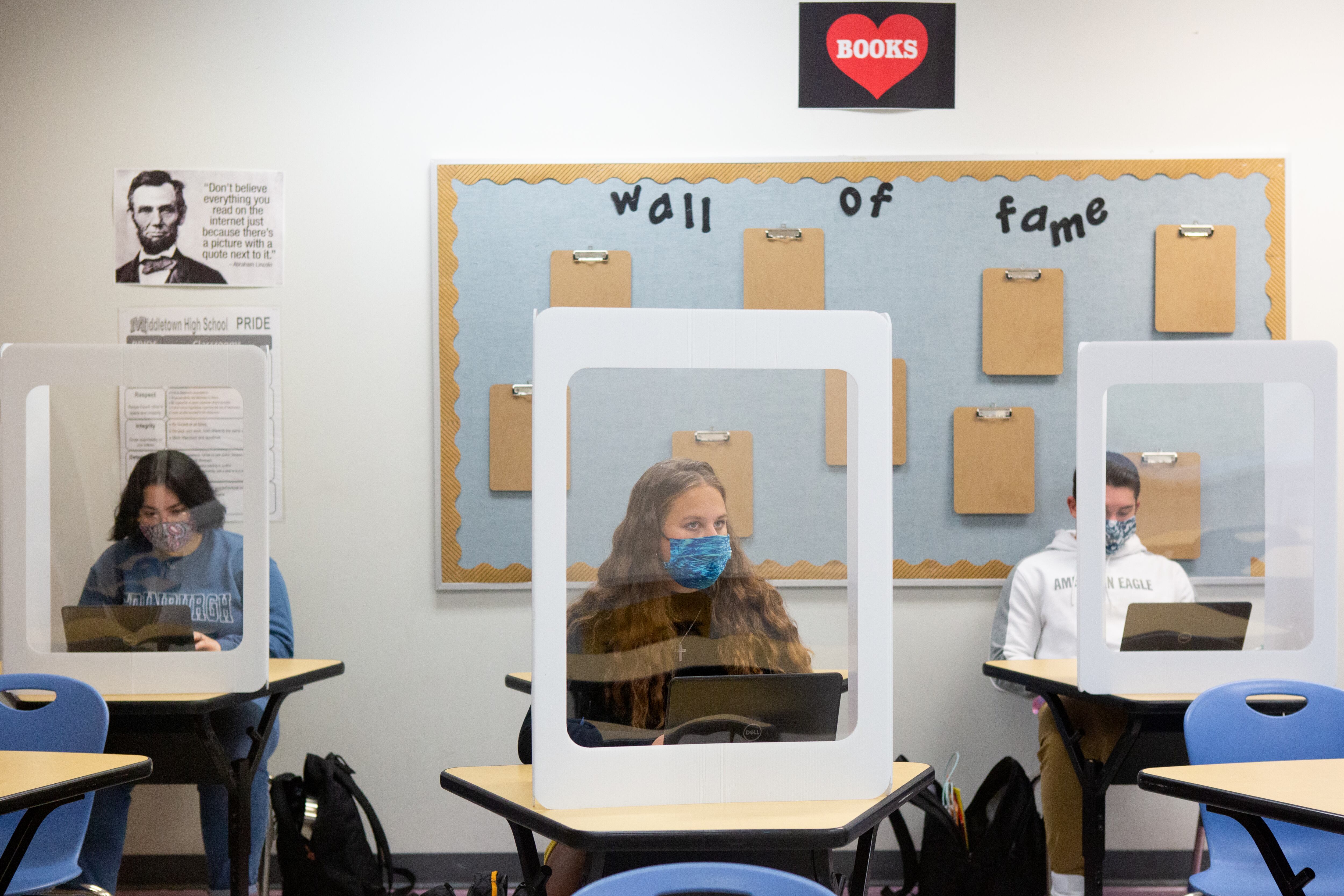In just a week, more than a dozen of the country’s large urban school districts have shifted policies to require masks for all students and staff. And on Monday, the country’s largest school district announced it will require all school staff to be vaccinated, joining Chicago and Los Angeles.
New York City’s decision came just as the Food and Drug Administration announced full approval of the Pfizer vaccine, a move that could encourage more school districts to impose vaccine mandates.
The flurry of activity comes as the school year begins for more of the country and millions return to school buildings, many for the first time since the start of the pandemic. With the COVID-19 delta variant pushing case numbers up, schools are trying to calibrate their rules, often ratcheting up safety protocols.
“We’re going to keep these mandates because we’re looking ahead, and without having both I don’t think we’re going to have a strong recovery year,” said Pedro Martinez, the superintendent of San Antonio’s schools, which require masks for all and vaccines for staff. “I think we’re risking having another year with instability, potentially shutting down schools — we’re already seeing examples of this across the country.”
Policies still vary widely, and, like last school year, often correlate with state or local political leanings. But vaccine mandates for school staff are becoming more common. New York City’s rule will apply to 148,000 employees, and doesn’t allow staffers to opt for frequent testing instead.
“This is a game-changing moment,” New York City mayor Bill de Blasio said of the FDA’s vaccine approval. “We’ve been waiting for this for a long time.”
A number of other districts, including Chicago and Denver, along with Oregon and Washington state, have already announced vaccine requirements for school staff. Elsewhere, including in California and Hawaii, school staff must choose between the vaccine or weekly COVID tests. New Jersey adopted that policy Monday.
“I wouldn’t be surprised at all if we see at least a few more districts or states put in place measures” around vaccines, said Bree Dusseault, an analyst at the Center on Reinventing Public Education, which has tracked state and district policies.
Still, vaccine rules are far from the norm. At least a dozen states have banned schools from enforcing vaccine requirements, although some districts like San Antonio have flouted state rules. A CRPE review of 100 large school districts found most are not requiring vaccination for staff and none is requiring it for all eligible students.
Mask mandates, on the other hand, are more prevalent. Two-thirds of the 100 large districts now say everyone must wear a mask, an increase of 14 districts from just a week ago. (The review included both districts that have started the school year and others that are preparing to do so.)
“Things are changing fast as the 100 large and urban districts in our nationwide review respond to the threat of the Delta variant,” wrote Dusseault and Travis Pillow of CRPE.
At least some districts outside city centers have also implemented mask mandates after seeing COVID cases rise, particularly among children.
“It tripped alarm bells,” said Don Kite, the school board president of Indiana’s Washington Township, which adopted a mask requirement a week into the school year. “We started talking about how we might have to go even more cautious, with universal masking.”
Although polls show that they are popular among parents and the broader public, masking requirements in schools have drawn criticism from a vocal contingent of parents and conservative politicians. “Every child’s situation is different, and parents know what’s best for their children,” said Tennessee State Sen. Brian Kelsey.
The masking debate has provoked polarized political responses: The Biden administration is pushing back against Republican governors in Florida, Tennessee, and Texas attempting to limit mask requirements, and siding with school districts that have put them in place.
The move toward masking brings more schools in line with the Centers for Disease Control and Prevention, which initially recommended that masks only be required for unvaccinated individuals, but shifted to a universal approach at the end of July as COVID cases surged.
But in another respect, many schools are still deviating from the CDC’s recommended approach.
When it updated its schools guidance in early July, the CDC included new exceptions for quarantining students and staff exposed to COVID. Someone who is vaccinated does not need to quarantine, the agency said. A student exposed to a peer with COVID in a classroom does not need to quarantine either — as long as both were masked and they were at least three feet apart.
But this change didn’t get much attention, and the recommendation isn’t fully spelled out on the main page of the CDC’s school guidance, making it easy to miss.
The review of 100 large districts’ quarantine rules by CRPE found that only 11 included exemptions for masked students, while 50 had exemptions for vaccinated students.
It’s not clear if most districts have missed the CDC’s new exemptions or are consciously taking a more cautious approach. Regardless, ignoring the CDC recommendations will likely lead to more students missing in-person instruction.
“If a district is preferencing safety of kids — which I completely understand why they would — then they have to invest in continuity of instruction to ensure students, when they get sent home, have clear ways to access instruction,” said Dusseault. “We’re not seeing a lot of districts share how they plan to do that.”






